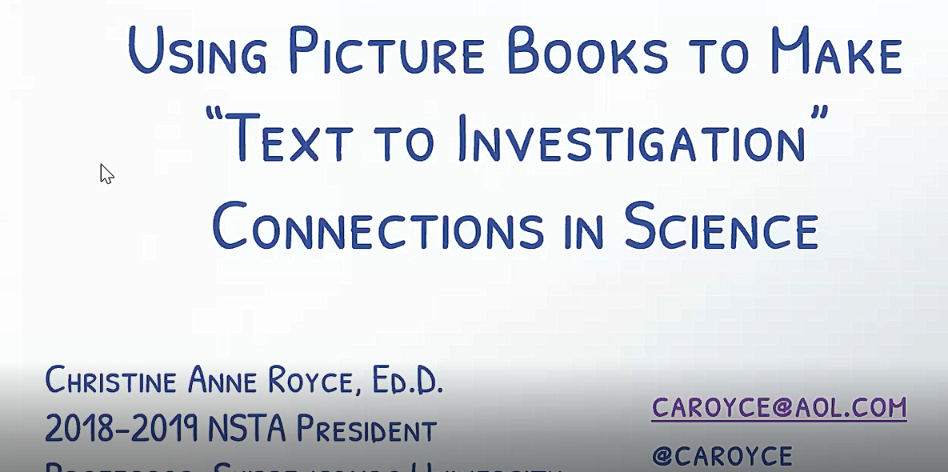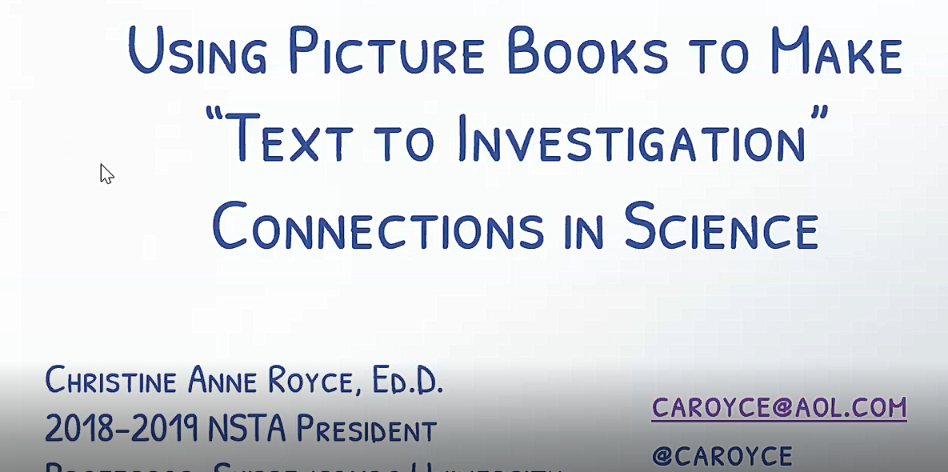NSTA ENGAGE Spring 21
Using Picture Books to Make Text to Investigation Connections
By Christine Anne Royce (Shippensburg University: Shippensburg, PA)
Literacy has used “text to” connections to help students make authentic connections. Integrating picture books helps expand text to investigation connections in the science classroom.
This session is targeted for novice/intermediate attendees.
Materials needed:
- Children's book (related to science) of your choice
- shallow plastic tub with water (similar to plastic shoeboxes)
- variety of different objects that can be placed in water—some that sink and some that float
- tin foil
- common objects for weight to be used in tin foil boat such as pennies, marbles, similar sized legos, etc.
Takeaways: Participants will: 1. explore how to expand a common literacy strategy of “text to” connections when using picture books in the elementary science classroom; 2. engage in investigations that model the use of “text to” connections that help students connect their own authentic experiences and help students understand and make sense; and 3. consider criteria for the selection of books, identification of phenomena, and how the selection of investigations can be a powerful experience for students.
Speakers
Christine Anne Royce (Shippensburg University: Shippensburg, PA)




